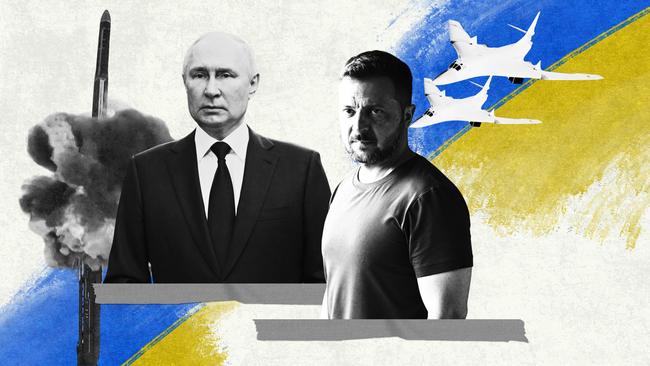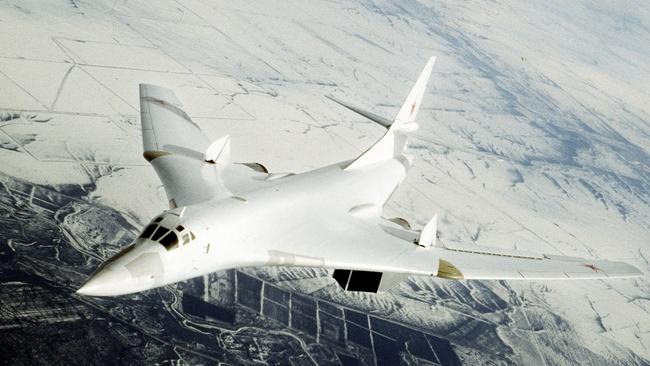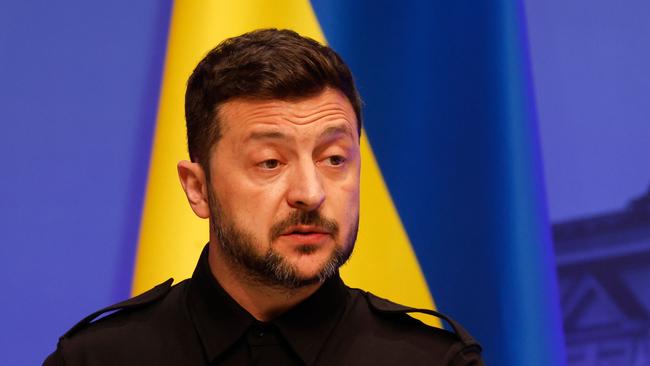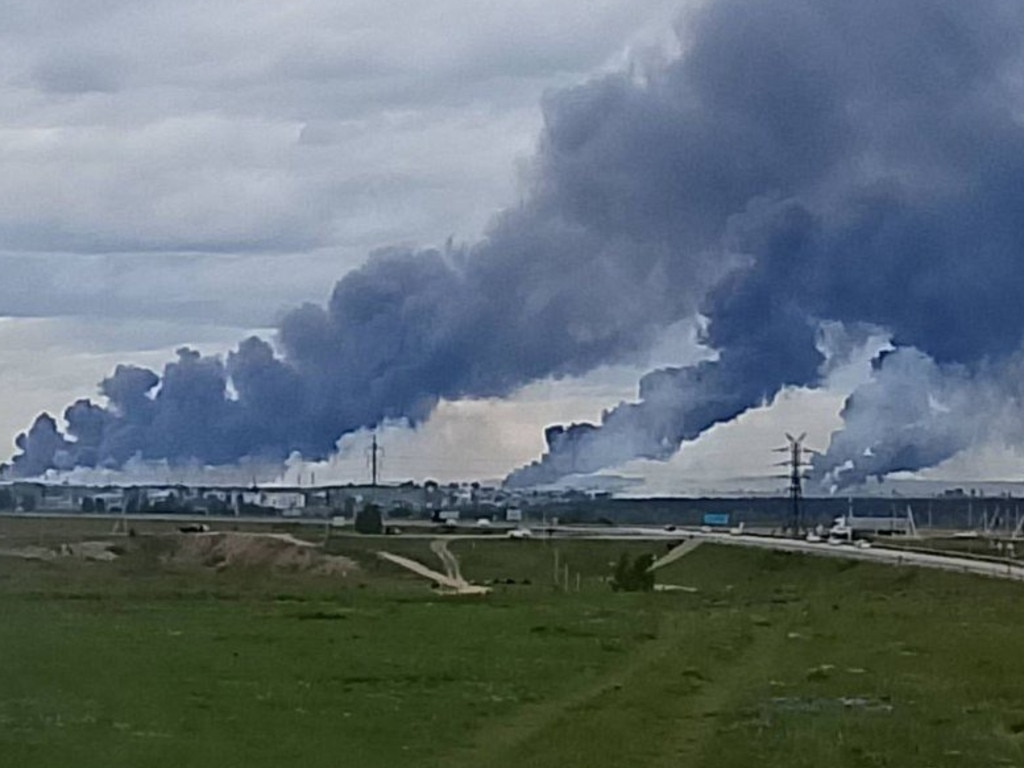Ukraine’s stunning assault roils Russia’s global military strategy
Surprise drone attack hits Moscow’s capacity to threaten distant rivals such as US.

Ukraine’s unprecedented drone strikes on Russian air force bases weaken Moscow’s ability to wage war on its smaller neighbour and undermine its capacity to threaten more distant rivals such as the US — a shift with potentially far-reaching geostrategic implications.
A sizeable portion of the fleet Moscow uses to launch guided-missile attacks on Ukraine — and would rely on to strike adversaries in the event of a nuclear war — was damaged or destroyed in the co-ordinated attacks.
Russia no longer produces the decades-old Tupolev planes, meaning it has lost a cornerstone of its ability to project military power beyond its borders. Newer Russian planes are more modern and agile but lack vital characteristics of the destroyed bombers, most significantly their range and the quantity of munitions they can carry. The attack also apparently destroyed a rare Antonov plane Russia uses for airborne command-and-control, another capability vital to modern warfare.

Of more than 100 Tupolev bombers that Russia is known to have, Ukraine said it had damaged or destroyed more than 40. A full assessment will take time, but open-source intelligence analysts counted at least 14 damaged aircraft using satellite images and video posted online. It is unclear how many of the Tu-22s and Tu-95s were operational before the strikes.
Russia confirmed some losses at the air bases, saying it repelled part of what it called a terrorist attack. It offered no evidence of repelling the strikes.
Lt. Gen. Vasyl Maliuk, head of Ukraine’s main security and intelligence agency, the SBU, said Monday that the order to destroy the warplanes had come directly from President Volodymyr Zelensky.
“The enemy bombed our country from these planes almost every night, and today actually felt that ‘payback is inevitable,’ ” Maliuk said.

The Ukrainian drone strikes cast a cloud over peace talks between Russia and Ukraine in Istanbul Monday, where talks ended after the two sides met for just over an hour with little progress toward an agreement. Ukrainian officials said the two sides agreed on further exchanges of prisoners of war. Both sides sent low-level delegations, reflecting slim hopes of any breakthrough in the talks.
After the drone strikes, Russia will be forced to rethink how it operates, stores and defends its remaining strategic-bomber fleet. Russia, like the US., often leaves long-range bombers parked outside and easily visible, both for operational reasons and as part of nuclear-disarmament agreements with Washington around the end of the Cold War.
Moscow has already been compelled by Kyiv’s steady drone strikes inside Russia to relocate most of the planes to bases far from Ukraine. Indeed the remoteness of the bases hit Sunday is part of what made the carefully planned strikes so unexpected. The most distant is roughly 3,000 miles from Kyiv.
Keeping planes far from Ukraine has meant that Russian bombers must take long flights to reach targets, giving Ukraine and Western intelligence agencies chances to observe and prepare for their movement, also adding complexity to Moscow’s attack plans.
Russia now will need to devote more resources to protecting bombers and other valuable military assets. The country has a vast air-defence system that it has expanded in recent years, but it lacks sufficient equipment to cover the entire country and protect against all dangers, from long-range missiles to small, slow drones like those used Sunday.

Zelensky said Sunday that the attacks on four bases had been prepared and launched inside Russia. The intelligence feat will sow fear within the country and likely prompt Moscow to tighten internal controls and repression.
Russian President Vladimir Putin, who is seen by many Western intelligence analysts as deeply paranoid, is likely to grow more concerned about internal enemies and take harsh measures in response to the public humiliation. Close-to-home intelligence failures around the world generally prompt purges and upheaval in security services. Russia has already undertaken many since its initial large-scale invasion of Ukraine in early 2022 failed.
Russia has used the warplanes to relentlessly bombard Ukraine with bombs, missiles and drones, hitting a range of civilian targets and killing or wounding thousands of civilians.

The planes Ukraine hit fill a role in Russia’s air force fleet roughly comparable to America’s B-52 and B-1 bombers. The US also has stealthy B-2 flying-wing bombers and is developing a successor, the B-21. In total, the US has roughly 140 operational long-range bombers.
Tu-95s, which first flew in the 1950s as the Soviet Union was developing long-range jet-engines, instead use four turbine engines, each with a pair of external propellers that rotate in opposite directions for speed and thrust.
But Russia faces a bigger problem than the age of its planes, which isn’t an inherent flaw. B-52s were designed in 1949 and the US plans to keep around 76 of them flying until at least 2050 thanks to waves of modernisation.
The deeper issue for Moscow is that its aviation industry shows no sign of being able to design and produce a plane that fills the role of the Tupolevs. If Ukraine destroyed nearly as many as it has claimed, the loss would represent a deep blow to Russia’s status as a global superpower.
Long-range bombers represent vital parts of both Russian and American ability to deliver nuclear weapons in a war. The other two legs of the so-called nuclear triad are submarines and land-based missiles. Russia’s navy has struggled in recent years to maintain and modernise its equipment. The readiness of its land-based intercontinental ballistic missiles and their launch silos is difficult to gauge.
The damage to Russia’s nuclear deterrent comes as countries in Europe have been stepping up spending on nuclear weapons. On Monday, the U.K. said it would build up to 12 new nuclear-powered submarines by the late 2030s and spend GBP15 billion upgrading its nuclear warhead arsenal. The investment, worth $20.3 billion, is aimed primarily at deterring aggression from Russia and putting its long underfunded military back in shape.
Kyiv’s success hitting Russian bases from nearby comes atop a string of Ukrainian long-range attacks on Russian military and energy facilities. Ukraine last year destroyed a Russian early-warning radar antenna that had been built to detect a potential US nuclear attack.
In 2023, Ukraine severely damaged the Kerch Strait Bridge using naval drones, following a truck-bomb attack in 2022 that created a spectacular fireball. The explosion, which ignited fuel cars on a passing train, closed for many months a causeway that Putin had built with great fanfare following his seizure of the Crimean Peninsula from Ukraine in 2014.
The Wall Street Journal




To join the conversation, please log in. Don't have an account? Register
Join the conversation, you are commenting as Logout